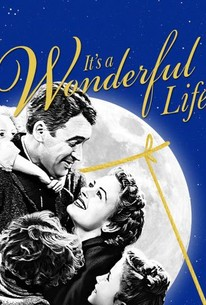I recently completed Cole, part of the Cupids & Cowboys series. The following are taken from the Author’s Notes in the back of the book:

CP Huntington Locomotive after restoration
Beginning in 1869, the Central Pacific Railroad began either leasing other lines, or buying them out. What I did learn was that, for decades, former California governor, Leland Stanford, and the other officers of the Central Pacific ended up having their hand in almost all the railroad business in the state. By 1885, the C.P.R.R. was leased to the Southern Pacific Railroad and later consolidated with that line to become Southern Pacific Railroad.

Santa Fe train southeast of Merced 1994, before the line became the BNSF
One exception to C.P.R.R. involvement was the Santa Fe Railroad that built a line in the San Joaquin Valley. Although that company has changed names several times and is currently known as the Burlington Northern & Santa Fe Railway, the Santa Fe tracks pass within a mile of my house.

Portion of 1871 Bancroft Map, notations added
Unfortunately,
Leland Stanford, et al, got into a
snit with Stockton and basically went to war against the city. Instead of
having Stockton as one of its major stations on the San Joaquin Valley
Railroad, the company created the town of Lathrop, named after Stanford’s
brother-in-law, to serve that role. The location was originally known as
Wilson’s Station. This line, the San Joaquin Valley Railroad line, started at Lathrop, which connected to the Western Pacific line. The first Western Pacific Railroad company failed and was absorbed by the Central Pacific Railroad in 1870. For twelve years, every effort was made to bypass Stockton by
transporting travelers and shipping freight to San Francisco first before it would
be taken to or from Stockton. Stockton was not printed on the railroad maps of
the time.
Eventually, the connection was made with Stockton, and the San Joaquin Valley Railroad became part of the Southern Pacific Railroad. Its tracks are about three miles from my home. As a rural letter carrier, I used to deliver mail along S.P. Avenue built next to the tracks.
One of the financial difficulties railroads ran into throughout California was that so much of the land was tied up in Mexican land grants. Largely due to the support the United States received during the 1846-48 war with Mexico from many of the Californios—those Mexican citizens who lived in Alta California—the United States recognized ownership of land originally granted by the Mexican government. Although proving such land claims was not always easy and is a different topic for a different discussion, one of the repercussions for railroads was that said land was not considered federal territory. [I found it difficult to find public domain maps of Mexican land grants, but you might get some ideas of where they were located and how they might have affected the building the railroad by CLICKING HERE and by CLICKING HERE.][This book by Attorney Henry Beard is titled The lands granted to and withdrawn for the
benefit of the Southern Pacific Railroad Company of California, and was published in 1877. It is in the public domain.]
[Mexican grant land] did not qualify as land that railroads would be granted to be sold for profit. Since the sale of land along qualifying rail line right-of-ways was how many railroads made their profit, many railroads that built in California ran into financial difficulty. That is one of the reasons behind the failure of the first Western Pacific Railroad that built mostly along the coast. Most of the land was Mexican land grant land, and had to be purchased.
It was also due to the number of Mexican Land Grants in California that there was not a lot of land available for homesteading, particularly on the coast or in the central valley (Sacramento Valley and San Joaquin Valley).
Regarding land ownership and women, California is one of the few community property states in the United States. The ability of women to own land was established in the first state constitution in 1850. Married women were allowed to own land separate from their husbands. Land owned by women before their marriage remained their sole property and could not be claimed by a husband after marriage. Likewise, land owned by men prior to marriage remained their sole property.
Land and other assets gained by the couple after marriage was community property to which the wife had a claim. For most of the 1800s, women could inherit up to one-half of the estate of her deceased husband, but she could not will or devise her half away from her husband. Upon her death, one hundred percent of the estate was inherited by the husband.
California community property laws, which were influenced by Mexican property laws, were the standard used by other community property states to develop their laws.
Several years ago, under my real name, I put together a presentation on California laws and how they affected women. My synopsis for that is still available on my Robyn Echols website HERE.
Cole, book 8 in the Cupids & Cowboys series is currently on preorder and will be released April 1st. Please CLICK HERE to find the book description and purchase link,
Sources:
http://daytonology.blogspot.com/2008/07/mexican-land-grant-to-us-state-capital.html
https://web.stanford.edu/group/spatialhistory/cgi-bin/site/pub.php?id=15
https://commons.wikimedia.org/wiki/File:The_lands_granted_to_and_withdrawn_for_the_benefit_of_the_Southern_Pacific_Railroad_Company_of_California_(IA_landsgrantedtowi00bearrich).pdf
https://sites.rootsweb.com/~cagha/history/sanjoaquin/sanjoa-1923-244.txt


































